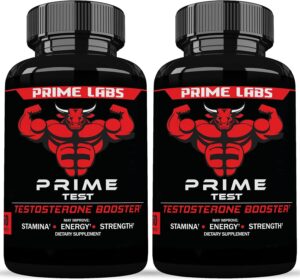
In the hit TV series Vikings, Alexander Ludwig’s portrayal of Bjorn Ironside captivated audiences worldwide. To convincingly embody this legendary Viking warrior, Ludwig underwent a rigorous transformation, not just in acting but in his physical appearance. His workout routine for the role was intense, designed to build the strength, endurance, and agility needed to survive and thrive in the brutal world of the Vikings. This article delves into the details of Alexander Ludwig’s workout routine for Vikings, exploring how he prepared his body and mind to become Bjorn Ironside.
1. Understanding the Demands of the Role
Bjorn Ironside, as depicted in Vikings, is not only a son of the legendary Ragnar Lothbrok but also a powerful warrior and eventual king. To portray this character authentically, Ludwig needed to develop a physique that matched the strength, resilience, and toughness of a Viking leader. The role demanded a blend of muscularity, endurance, and combat readiness, all of which required a meticulously planned workout regimen.
2. Strength Training: Building a Viking’s Physique
The foundation of Ludwig’s transformation was strength training. To develop the muscular build required for Bjorn, Ludwig’s workout focused on hypertrophy (muscle growth) and functional strength.
- Compound Movements: Central to Ludwig’s routine were compound exercises that target multiple muscle groups simultaneously. These exercises are crucial for building overall strength and muscle mass. Ludwig’s routine included:
- Deadlifts: A key exercise for developing the posterior chain, including the back, glutes, and hamstrings.
- Squats: Essential for building powerful legs and a strong core.
- Bench Press: Targeting the chest, shoulders, and triceps, providing upper body mass and strength.
- Pull-ups/Chin-ups: Effective for developing the back and biceps while engaging the core.
- Heavy Lifting and Low Reps: Ludwig focused on lifting heavy weights with lower repetitions (typically 4-6 reps per set) to maximize muscle growth and strength. This approach was essential for developing the dense, solid muscle needed to portray a warrior.
- Progressive Overload: Ludwig’s routine was designed around progressive overload, where the weight or resistance is gradually increased over time. This strategy ensures continuous muscle development and prevents plateaus.
- Functional Strength Exercises: Beyond traditional weightlifting, Ludwig incorporated exercises that enhanced functional strength—important for the dynamic movements required in combat scenes. These included kettlebell swings, tire flips, and farmer’s walks.
3. Endurance and Conditioning: The Viking’s Stamina
In addition to strength, Ludwig needed the stamina to endure long shooting days and intense battle scenes. To achieve this, his routine included high-intensity conditioning exercises.
- High-Intensity Interval Training (HIIT): HIIT was a major component of Ludwig’s conditioning, involving short bursts of maximum effort followed by brief recovery periods. HIIT workouts included:
- Sprinting: Used to build explosive speed and cardiovascular fitness.
- Battle Ropes: A full-body exercise that enhances both strength and endurance.
- Plyometrics: Jumping exercises that improve power and agility, crucial for the explosive movements in fight scenes.
- Circuit Training: Combining strength and cardio exercises into circuits allowed Ludwig to increase workout intensity and simulate the continuous exertion of battle.
- Combat Training: Ludwig also trained in various forms of combat, including sword fighting, boxing, and martial arts, to perform fight sequences convincingly. These sessions demanded not just physical strength, but also mental focus and precision.
4. Core Strength: The Center of Power
A strong core was crucial for Ludwig, not just for aesthetic purposes, but to stabilize his body during complex movements. Core strength was essential for both fighting and performing stunts on set.
- Planks: Planks and their variations were key to building core stability, vital for the controlled, powerful movements required in combat.
- Russian Twists: These were used to develop rotational core strength, important for the twisting and turning actions in fight scenes.
- Hanging Leg Raises: This exercise targeted the lower abdominal muscles while also building grip strength.
Ludwig’s core workouts were often integrated at the end of his training sessions, ensuring a balanced and comprehensive development of his midsection.
5. Nutrition: Fuelling the Viking Body
A rigorous workout regimen requires a solid nutrition plan to support muscle growth, recovery, and overall performance. Ludwig’s diet was as disciplined as his training, focusing on the right balance of macronutrients.
- Protein: Protein was the cornerstone of Ludwig’s diet, crucial for muscle repair and growth. He consumed high-quality protein sources such as lean meats, fish, eggs, and plant-based proteins like legumes and quinoa. Protein shakes were also included to ensure he met his daily intake, especially post-workout.
- Carbohydrates: Carbs provided the necessary energy to sustain Ludwig through his intense workouts and long days on set. He focused on complex carbohydrates from whole grains, sweet potatoes, and vegetables to provide a steady source of energy.
- Fats: Healthy fats from sources like avocados, nuts, seeds, and olive oil were included to support hormone production and overall health.
- Meal Timing: Ludwig paid attention to when he ate, ensuring his body was fueled before workouts and properly nourished afterward for recovery. Pre-workout meals were rich in complex carbs, while post-workout meals focused on protein and simple carbs for muscle repair.
- Hydration: Staying hydrated was a critical aspect of Ludwig’s regimen. Adequate hydration helped maintain his energy levels and aided in recovery, especially during intense training sessions and under the hot lights of the set.
6. Recovery: The Unsung Hero
Recovery was an essential part of Ludwig’s training program. Without proper recovery, his body wouldn’t be able to repair, grow, or withstand the continuous demands of his role.
- Sleep: Ludwig prioritized getting 7-8 hours of sleep each night. Sleep is when the body repairs muscle tissue and resets, making it essential for recovery and performance.
- Active Recovery: On rest days, Ludwig engaged in light activities like yoga, walking, or swimming. These low-intensity exercises helped improve circulation, reduce muscle soreness, and maintain flexibility without putting additional strain on the body.
- Stretching and Mobility Work: Stretching was an integral part of Ludwig’s routine, helping to improve flexibility and prevent injuries. Dynamic stretches were performed before workouts to prepare the body, while static stretches and foam rolling were used post-workout to aid in recovery.
7. Mental Toughness: The Mind of a Warrior
Transforming into Bjorn Ironside required more than physical preparation. The mental toughness to push through gruelling workouts and long filming days was just as crucial. Ludwig focused on developing a warrior mindset, essential for both his training and his performance on screen.
- Focus and Discipline: Maintaining the discipline to follow a strict workout and diet regimen, especially during long shooting schedules, required immense mental fortitude. Ludwig needed to stay focused on his goals, even when faced with physical and mental exhaustion.
- Visualization: Visualization techniques helped Ludwig prepare for the physical demands of his role. By mentally rehearsing fight scenes and battles, he could enter the set with the confidence and intensity needed to perform at his best.
- Mind-Body Connection: Understanding the connection between mind and body was essential for Ludwig. This awareness allowed him to push through physical limits, recover faster, and stay in peak condition throughout the filming of Vikings.
Alexander Ludwig’s transformation into Bjorn Ironside was no small feat. It required a comprehensive and disciplined approach to training, nutrition, and recovery, all designed to build the body and mind of a Viking warrior. His workout routine, which combined strength training, conditioning, core work, and combat training, was meticulously crafted to prepare him for one of the most physically demanding roles of his career.
The result was a portrayal of Bjorn Ironside that was as authentic as it was powerful, with Ludwig embodying the strength, endurance, and ferocity of a Viking warrior. His dedication to the role serves as a testament to the level of commitment required to bring such a legendary character to life, both on and off the screen.








